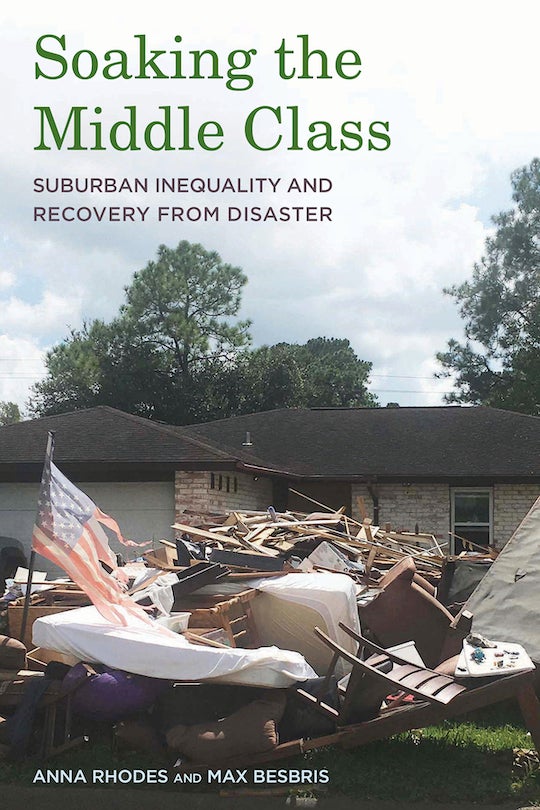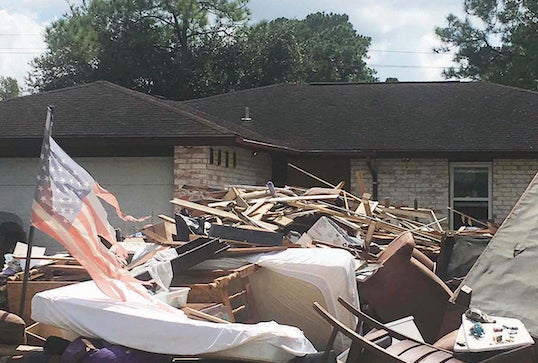The devastation of Hurricane Harvey, the second-costliest hurricane to ever hit the United States, wasn’t limited just to the most vulnerable residents in its path — it was also felt intensely by the middle class. Those struggles are the focus of a new book by sociologists from Rice University and the University of Wisconsin.

“Soaking the Middle Class ” (Russell Sage Foundation, 242 pages, $37.50) was authored by Rice assistant professor of sociology Anna Rhodes and University of Wisconsin assistant professor of sociology Max Besbris, who was on the faculty at Rice during Harvey. It explores how families in the Houston suburb of Friendswood recovered from the storm and how that process exacerbated economic inequality within the community.
“Many people might assume that a middle-class community like Friendswood, which has plenty of resources at its disposal, would be able to recover quickly from catastrophic weather events like Hurricane Harvey,” Rhodes said. “But we find that inequalities between neighbors grew in the aftermath of Harvey. While some residents were able to fully recover and even increase their savings, others still had incomplete walls and no flooring two years after the flood with no sense of whether they would ever have the resources to complete their repairs.”
As global temperatures rise, Atlantic hurricanes are becoming wetter, flooding near rivers is increasing and wildfires have longer windows in which to burn, putting a greater number of communities at risk. Besbris said many Friendswood residents considered their homes at relatively low risk for flooding before Harvey, based on their experience with previous storms. In fact, only about half of the households in the study had flood insurance.
After Harvey, many residents found it difficult to assess their future flood risk, partially due to lack of guidance from federal agencies and local government. Without a clear sense of risk, most of them decided to return to their potentially vulnerable neighborhoods and rebuild.
“We currently don’t have good mechanisms to communicate risk to residents,” Besbris said. “What our book shows is that information is key to lessen further disaster, but it simply isn’t being provided in clear or systematic ways.”
Rhodes said studying how people in places like Friendswood recover from disasters is key to understanding the class system. Ultimately, the inequalities amplified by the recovery process make middle-class suburbs less resilient at time when climate change makes them more vulnerable.
“Extreme weather is only growing in scale and severity as global warming worsens,” Rhodes said. “We hope this book will shed light on how even well-resourced neighborhoods are increasingly at risk as climate-related storms intensify.”
More information on the book is available online at https://www.russellsage.org/publications/soaking-middle-class .

